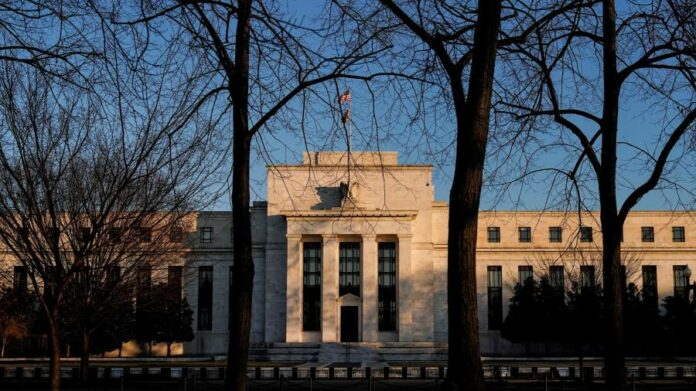The Federal Reserve is set to slow the pace at which it tightens monetary policy and raise its benchmark interest rate by half a percentage point on Wednesday, even as it signals its intention to continue squeezing the US economy next year.
At its final gathering of the year, the Federal Open Market Committee (FOMC) is poised to lift the federal funds rate to a new target range of 4.25 per cent to 4.5 per cent, as its fight against persistent inflation reaches a new juncture and it ends its months-long string of 0.75 percentage point rate increases.
Fed officials are also expected to revise their projections for the benchmark policy rate upwards next year compared to their previous estimates published in September, when most estimated a peak of 4.6 per cent.
On Wednesday, the “dot plot” of individual forecasts is set to show the fed funds rate hitting between 4.75 per cent and 5.25 per cent, with a sizeable cohort favouring the higher end of that range.
As was the case three months ago, most officials will signal that they do not anticipate rate cuts until 2024, underscoring the need to keep interest rates high for an extended period to damp demand and help alleviate inflationary pressures.
The Fed’s rate decision and its latest projections will be published at 2pm Eastern Time, followed by a press conference with chair Jay Powell. They come on the heels of the latest inflation report, which showed US consumer price growth easing more than expected in November and recording its slowest annual increase in almost a year.
Powell has previously said it will take “substantially more evidence” than a single month’s data for the Fed to be confident inflation is actually declining, noting past periods when better than expected data were followed by fresh increases.
On Wednesday, Fed officials are expected to revise their 2023 forecasts downwards for the core personal consumption expenditures price index — their preferred inflation gauge. In September, the median estimate was 3.1 per cent in 2023 and 2.3 per cent in 2024, but based on the most recent data published in October, the core measure, which excludes volatile food and energy costs, is up 5 per cent on an annual basis.
Officials are actively debating how much more to restrain the world’s largest economy given signs that their actions so far — which have amounted to the most aggressive attempt to tighten monetary policy since the early 1980s — are starting to have a more noticeable effect.
US home prices have fallen from their recent peak as mortgage rates have surged, the manufacturing sector is flagging and consumer sentiment remains low. However, the labour market continues to show surprising resilience. The unemployment rate still hovers at a historically low level of 3.7 per cent and wages have risen rapidly amid an acute worker shortage, accelerating to a pace officials warn risks igniting yet more price pressures.
In light of the further rate rises to come, FOMC members and other regional bank presidents are also poised to revise lower their forecasts for growth and raise their unemployment rate projections.
In September, most predicted a 0.2 per cent expansion in 2022 followed by a 1.2 per cent gain in 2023, with the unemployment rate peaking at 4.4 per cent.
Powell recently said it is “very plausible” that the Fed can bring down inflation without causing a recession. New polling conducted by the Financial Times suggests doubts about that outcome, however. Of the economists surveyed, 85 per cent expect a recession next year.






